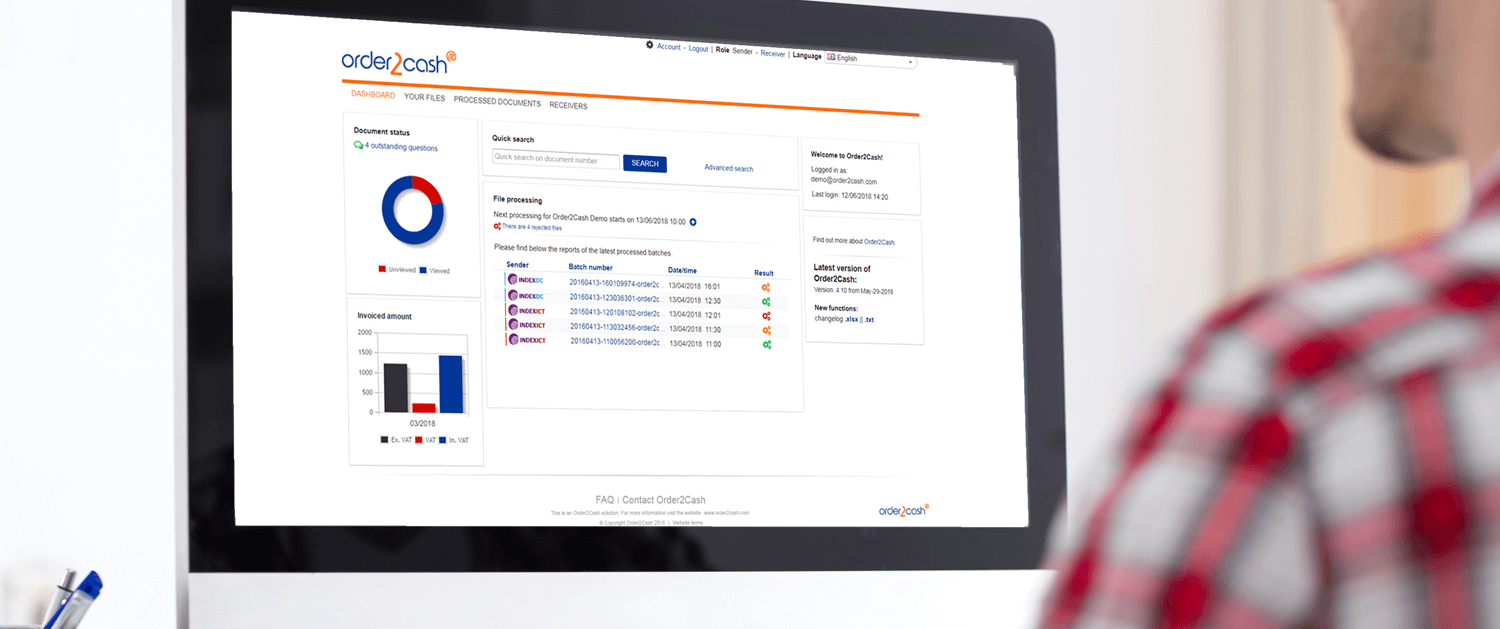The Order-to-Cash (O2C) process is by no means a matter for the Finance department alone. It affects the entire organization at different times. The O2C process is triggered by a contract, an order or a project. Managing the process comes with many challenges.

How the O2C process starts and ends is determined by the business model
As the word 'cash' immediately associates the O2C process with Finance, the idea often arises that the Finance department bears all the responsibility for it. That is not true. How the O2C process starts and ends is determined by the business model, different for example for wholesalers, construction companies, or healthcare institutions.
There is often a lack of awareness that the O2C process involves the entire organization. The Finance department is mainly seen as supporting the business model, rarely getting involved in the O2C process at the start. Contracts, orders, and projects usually originate with the commercial department, which is responsible for bringing in new customers, orders, and projects. Although commercial employees have a major impact on the O2C process, it is not always perceived that way.
Let's take a closer look at the O2C triggers:

Contract management
A contract forms the basis of the O2C process. It contains price agreements, determines payment terms and the frequency of invoicing, payment terms as well as any kickback fees or other commercial agreements that have financial consequences. The commercial department is generally involved in the conclusion of the contract. Finance only afterwards gains insight into the contract or in some cases only finds out about it when an invoice has to be sent for the first time.
When concluding a contract, it is important to act from a contract management perspective. The purpose is to avoid negative consequences. It is too late asking questions once payment has been made and the service or product has been delivered. You can consider asking the following questions:
- When is the best time to invoice?
- Prior to? Upon delivery? Afterwards?
- Who verifies invoicing is done on time?
- What prices are used?
- Is there a standard price list?
- Are prices à la carte?
- Have price agreements been made?
- Has a discount been given?
- Is there a situation that only applies to a specific customer?
- Who sets the prices?
- Who ensures that the agreed prices are invoiced?
- What are the requirements an invoice must meet?
- Does the invoice need a customer order number?
- Does it need a signed receipt or order as an attachment?

Order management
Depending on the type of organization, orders are the basis of invoicing. Wholesale, Fast Moving Consumer Goods or retail have an O2C process that is easy to outline: an order is placed; items are selected; stock quantities are adjusted; the items go to the customer; the customer pays. The simplicity of the process does not mean that things cannot go wrong on several occasions.
Basic data is crucial. For example, if many goods are delivered per day or even per hour, good essential data ensures that goods and invoices arrive timely. This involves questions such as:
- Who is your customer?
- Is it an existing customer
- Do you have all the necessary information to be able to deliver and invoice?
- Is it a new customer? How do you record the necessary information?
- Is there a customer acceptance procedure in place?
Sometimes an organization skips a few steps because of daily concerns or its focus on service. If the O2C process is not completely ‘sealed’ and leaves too much room for interpretation, this can lead to increasing debtor risks, non-payment or depreciation. This involves questions such as:
- Are customers able to pay?
- Do customers have outstanding invoices?
- Has their creditworthiness been checked?
- Does a customer always pay in advance or does he have a payment credit?
- Are all prices correct?
- Has a discount been given?
- Are there specific price agreements?
Project-driven organizations often have complex O2C processes. A good organization, clear coordination with all parties involved and strong IT are necessary to get a well-oiled machine.
David Busby, Expert manager O2C

Project management
Project-driven organizations often have complex O2C processes. A good organization, clear coordination with all parties involved and strong IT are necessary to get a well-oiled machine. Achieving an effective O2C process requires the right balance between thorough and complete contract management, order management (if relevant), and project management. Several factors play a role from the start:
- Contracts as a basis and starting point.
- Deliveries of materials and goods, such as with an order-driven organization.
- Hours worked; services invoiced at hours x rate.
- Target budgets and schedules.
- Milestones within a project; project deliverables; Point of Completion (POC).
- Agreements within the Service Level Agreements (SLAs) that must be met.
- Invoicing moments: advances, percentage steps, periodically, based on the POC, upon delivery.
This can create several challenges:
- Are contracts correct and complete?
- Have contracts been well drawn up?
- Do all stakeholders have access to the contract?
- Have all rates, prices, charges, numbers and possible limits been established in such a way that they can be invoiced without too much effort?
- Are all invoicing moments known?
- How are they determined?
- Who is responsible for initiating a new invoicing moment?
- Is the moment of invoicing automated?
- When is it not allowed to invoice?
- What are the exceptions to the rule?
- Who is responsible for delayed invoicing?
- When are errors or difficulties escalated?
- When is an error or dispute actually resolved, after which it an invoice can be sent again?
Processes, people and systems are intertwined
The quality of the O2C process correlates with processes, people, and systems. Without processes, people and systems go their own way. Without people, there are no exceptions. Without systems, processes are only working instructions that every individual employee interprets in their own way.
If the three elements do not seamlessly connect, invoices may be faulty, incomplete, or sent too late invoices.
Employees, managers, or directors should not underestimate the importance of contract, order, and project management. Many of the challenges mentioned above will sound familiar. It is up to you to take the right steps to improve this. Having a quick scan performed is the perfect way to know whether your O2C process is running smoothly. Curious whether your O2C process is running optimally? Do the check!
Related content
-
Blog
The inconvenient side of ESG investing
-
Blog
UK pilot program for sharing bank branches
-
Article
Xavier Gabriëls: ‘Businesses don't have the luxury of choosing which challenge to focus on. They have to tackle them all’
-
Article
Three Hacks to structurally improve your Credit & Collection
-
Blog
"The world of bookkeeping is exciting"
-
Article
Five reasons to work with 'Zoomers’